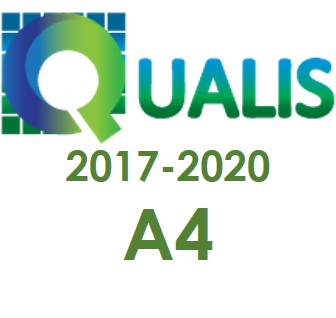Memes and the comic clipping of the COVID-19 pandemic
DOI:
https://doi.org/10.22481/el.v18i3.7947Keywords:
Memes; COVID-19; Scenography; HumorAbstract
This paper analyzes aspects of the enunciation of memes that circulated in the initial period of the COVID-19 pandemic in Brazil. Making use of the concept of “scenes of enunciation”, it analyzes the scenography of the texts as the scene of relevance, an important aspect of typical Internet enunciation. In addition, it analyzes the texts by offering an interpretation of how these texts comically cut out the historical moment of the pandemic. It is, therefore, at the same time, a work that promotes theoretical application and that aims to contribute to the understanding of the specific period to which the selected texts refer. For this, it selects different memes, but intensifies the analysis of those who are called “Dráuzio sincero (sincere)”.
Downloads
References
FREUD, S. Os chistes e sua relação com o inconsciente. Rio de Janeiro: Imago, 1977.
HAN, B.C. No enxame: perspectivas do digital. Trad. Lucas Machado. Petrópolis: Vozes, 2018.
MAINGUENEAU, D. Análise de textos de comunicação. Trad. Maria Cecília P. de Souza-e-Silva, Décio Rocha. 3ª ed. São Paulo: Cortez, 2004.
MAINGUENEAU, D. Discurso Literário. Trad. Adail Sobral. São Paulo: Contexto, 2006.
MAINGUENEAU, D. Discurso e análise do discurso. Trad. Sírio Possenti. São Paulo: Parábola, 2015.
MOIRAND, S. Discours, mémoires et contextes: à propos du fonctionnement de l’allusion dans la presse. Estudos da Língua(gem). Vitória da Conquista. v. 6, n. 1. p. 7-46, 2008. DOI: 10.22481/el.v6i1.1055. Disponível em: https://periodicos2.uesb.br/index.php/estudosdalinguagem/article/view/1055
OLIVEIRA NETA, J. P. Por uma Tipologia dos Memes da Internet. Entre.meios: revista da Pós-Graduação em Comunicação da PUC-RJ. Vol. 13, N. 2, jul-dez./2017. Disponível em: http://entremeios.com.puc-rio.br/cgi/cgilua.exe/sys/start.htm?sid=19. Acesso em: 07 de agosto de 2020.
POSSENTI, S. O humor é um campo. In: ____. Cinco ensaios sobre humor e análise do discurso. São Paulo: Parábola, 2018.
SHIFMAN, L. Memes in a digital world: reconciling with a conceptual troublemaker. Journal of computer-mediated communication. Vol 18 N. 3, 2013, P. 362 - 377, 1 abril 2013. Disponível em: https://academic.oup.com/jcmc/article/18/3/362/4067545. Acesso em: 07 de agosto de 2020.
SALGADO, L. S.; OLIVA, J. M. A produção de uma intimidade ubíqua, esteio da fratura social. Discurso & Sociedad. v. 13, n. 3, p. 432-448 2019. Disponível em: http://www.dissoc.org/ediciones/v13n03/DS13%283%29SalazarSalgado&TadeuOliva.pdf. Acesso em: 07 de agosto de 2020.
Downloads
Published
How to Cite
Issue
Section
License
Copyright (c) 2020 Language Studies

This work is licensed under a Creative Commons Attribution-NonCommercial-NoDerivatives 4.0 International License.

Estudos da Língua(gem) is licensed under a Creative Commons Attribution 4.0 International License.
Authors who publish in the journal Estudos da Língua (gem) agree with the following terms:
The journal Estudos de Língua(gem) maintains the copyrights of the contributions published. These rights include the publication of the contribution and make its content available for free through the portal.













